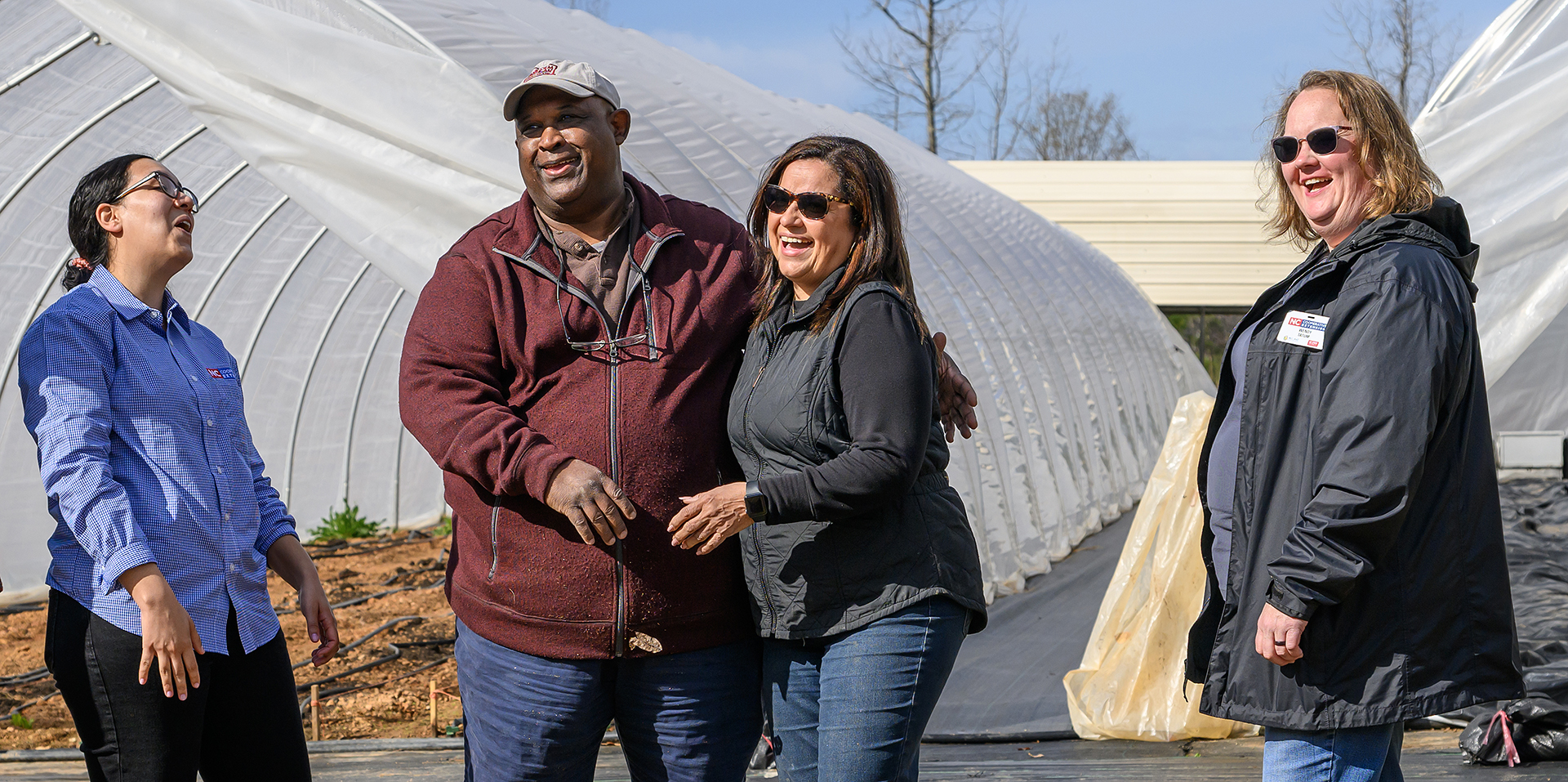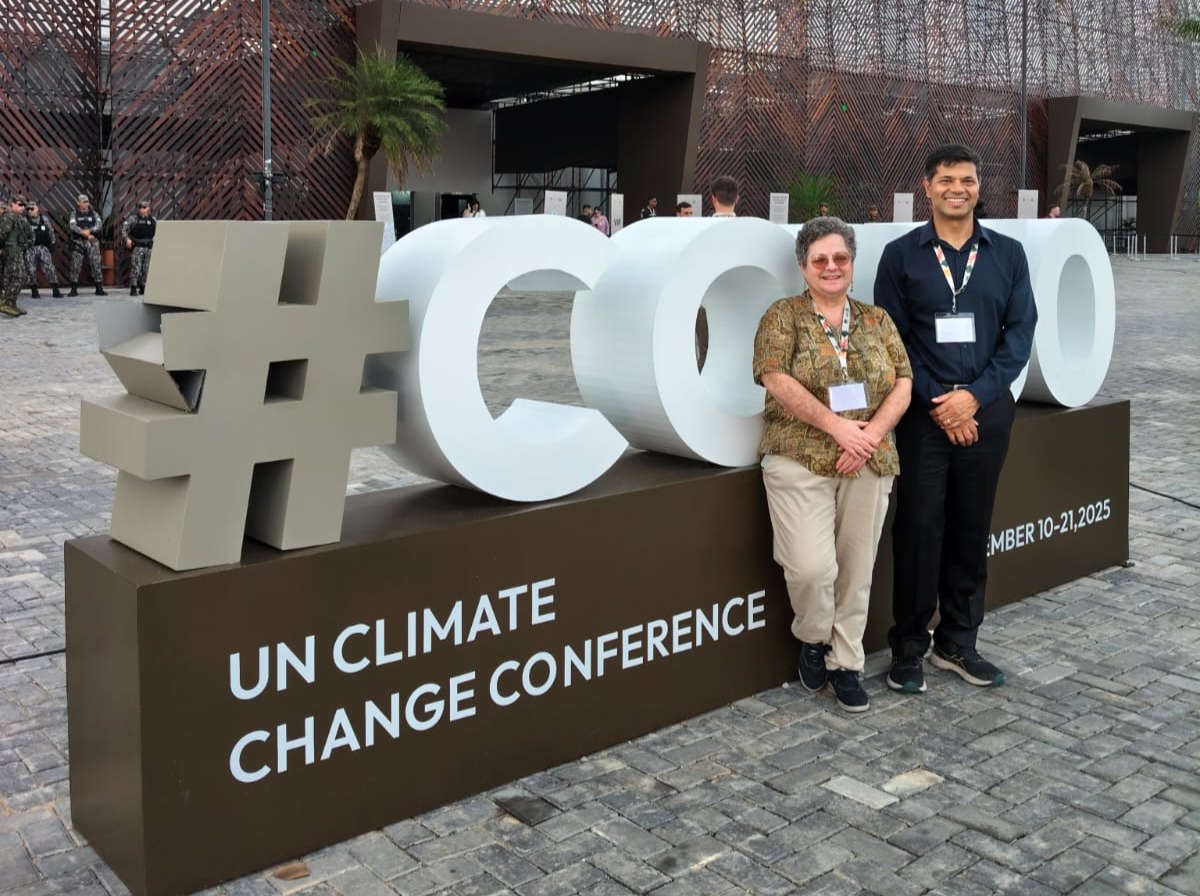Southern SARE Producer Grants Available to Support Sustainable Agriculture; Application Deadline: Dec. 5 – UAPB News

Report on the Southern SARE Producer Grant Program and its Alignment with Sustainable Development Goals (SDGs)
Program Overview and Objectives
The Southern Sustainable Agriculture Research and Education (SSARE) program has announced its Producer Grant Program, with applications due by December 5. The initiative, facilitated by institutions including the University of Arkansas at Pine Bluff (UAPB) Small Farm Program, is designed to fund research projects that advance sustainable agriculture and contribute directly to the United Nations Sustainable Development Goals (SDGs).
The primary objective is to empower farmers and ranchers to test and develop innovative solutions to agricultural production and marketing challenges. This model de-risks experimentation and promotes the widespread adoption of successful, sustainable practices, thereby strengthening local and regional food systems.
Contribution to Sustainable Development Goals (SDGs)
The Producer Grant Program is fundamentally aligned with several key SDGs:
- SDG 2: Zero Hunger: By funding research into resilient and productive agricultural practices, the program directly supports the goal of ending hunger, achieving food security, improving nutrition, and promoting sustainable agriculture.
- SDG 8: Decent Work and Economic Growth: The grants foster economic viability for small-scale producers by enabling them to develop more efficient and sustainable business models, contributing to inclusive and sustainable economic growth in rural communities.
- SDG 12: Responsible Consumption and Production: The program is centered on developing and validating sustainable production patterns. Projects funded are required to adhere to principles that ensure the long-term health of agroecosystems.
- SDG 15: Life on Land: A core tenet of the program is the support of farming systems that protect, restore, and promote the sustainable use of terrestrial ecosystems, combat desertification, and halt biodiversity loss.
- SDG 17: Partnerships for the Goals: The SSARE program exemplifies a multi-stakeholder partnership, involving collaboration between universities (University of Georgia, Fort Valley State University, UAPB) and agricultural organizations (Kerr Center for Sustainable Agriculture) to achieve sustainable development.
Grant Application and Funding Details
Key information for prospective applicants is outlined below:
- Application Deadline: All proposals must be submitted by December 5.
- Funding Tiers:
- Up to $20,000 for individual farmers and ranchers.
- Up to $25,000 for farmer/rancher organizations.
- Application Portal: Proposals can be submitted via the official website at https://southern.sare.org.
- Notification of Awards: Successful applicants will be announced in late February 2026.
- Inquiries: Questions may be directed to the UAPB Small Farm Program at (870) 575-7225.
Eligibility and Project Requirements
Proposals submitted for the Producer Grant Program must meet specific criteria to be considered for funding. The grants are competitive research funds and are not intended for operational expenses or capital investments.
Scope of Funding
- Permitted Use: Funds are designated for research activities that test potential solutions to agricultural production issues, with the goal of generating shareable knowledge.
- Prohibited Use: Grants cannot be used to pay a farmer to farm, purchase livestock, equipment, or land, or make permanent farm improvements.
Project Criteria
- Projects must align with Southern SARE’s program objectives and the definition of sustainable agriculture established in the 1990 Farm Bill.
- Applicants must be located within the Southern SARE region, which includes Alabama, Arkansas, Florida, Georgia, Kentucky, Louisiana, Mississippi, North Carolina, Oklahoma, South Carolina, Tennessee, Texas, Virginia, Puerto Rico, and the U.S. Virgin Islands.
Analysis of Sustainable Development Goals in the Article
1. Which SDGs are addressed or connected to the issues highlighted in the article?
-
SDG 2: Zero Hunger
This is the most prominent SDG addressed. The article focuses entirely on a grant program for “sustainable agriculture research projects” aimed at solving “agricultural production challenges.” This directly supports the goal of ending hunger, achieving food security, and promoting sustainable agriculture.
-
SDG 9: Industry, Innovation, and Infrastructure
The article discusses “competitive research grants” that allow farmers to “test a practice addressing a production or marketing problem.” This initiative fosters innovation at the grassroots level of the agricultural industry by funding research and the development of new, sustainable solutions.
-
SDG 1: No Poverty
The program supports farmers and ranchers, particularly through the “Small Farm Program,” by providing financial resources. The grants are “designed to take some of the financial risk away from trying a solution,” which can improve the economic resilience and stability of small-scale producers, contributing to poverty reduction.
-
SDG 17: Partnerships for the Goals
The Southern Sustainable Agriculture Research and Education (SSARE) program is presented as a collaborative effort. It is described as one of four regional programs “hosted by the University of Georgia, Fort Valley State University and the Kerr Center for Sustainable Agriculture,” with the University of Arkansas at Pine Bluff also playing a key role. This multi-institutional partnership across a large geographic region exemplifies the spirit of SDG 17.
2. What specific targets under those SDGs can be identified based on the article’s content?
-
Target 2.4: By 2030, ensure sustainable food production systems and implement resilient agricultural practices that increase productivity and production, that help maintain ecosystems, that strengthen capacity for adaptation to climate change, extreme weather, drought, flooding and other disasters and that progressively improve land and soil quality.
- Explanation: The article’s central theme is the funding of “sustainable agriculture research projects.” The program’s goal is to develop “sustainable agriculture systems or moving existing farming systems toward sustainability,” which directly aligns with creating sustainable and resilient food production systems.
-
Target 2.a: Increase investment, including through enhanced international cooperation, in rural infrastructure, agricultural research and extension services, technology development and plant and livestock gene banks in order to enhance agricultural productive capacity in developing countries, in particular least developed countries.
- Explanation: The Producer Grant Program is a direct investment in “agricultural research.” The involvement of the “Small Farm Program at the University of Arkansas at Pine Bluff” and other universities highlights the role of extension services in disseminating information and supporting farmers.
-
Target 9.5: Enhance scientific research, upgrade the technological capabilities of industrial sectors in all countries, in particular developing countries, including, by 2030, encouraging innovation and substantially increasing the number of research and development workers per 1 million people and public and private research and development spending.
- Explanation: The program encourages innovation by providing “competitive research grants” for farmers to “test a practice addressing a production or marketing problem.” This empowers farmers to become researchers and innovators, enhancing scientific research at the farm level.
-
Target 1.4: By 2030, ensure that all men and women, in particular the poor and the vulnerable, have equal rights to economic resources…
- Explanation: The grant provides farmers with access to economic resources (“maximum funding amount… is $20,000 for individual farmers… and $25,000 for farmer/rancher organizations”) to which they might not otherwise have access. The article also explicitly states that the programs are offered “without regard to race, color, sex, national origin, religion, age, disability,” ensuring equal opportunity.
3. Are there any indicators mentioned or implied in the article that can be used to measure progress towards the identified targets?
-
Indicator for Target 2.a (Financial Flows): The article specifies the amount of funding available through the grants.
- Specific Mention: “The maximum funding amount for a Producer Grant is $20,000 for individual farmers and ranchers and $25,000 for farmer/rancher organizations.” This serves as a direct measure of financial resources mobilized for agricultural research.
-
Indicator for Target 2.4 & 9.5 (Adoption of Sustainable Practices): The article implies that the number of funded projects and the successful dissemination of their results are key metrics.
- Implied Measure: The process involves funding proposals (“Announcement of funded proposals will take place in late Feb. 2026”) and evaluating outcomes (“if the project successfully and sustainably addresses the problem at hand, the information can be shared on a larger scale”). The number of projects funded and the extent of knowledge-sharing are implicit indicators of progress.
-
Indicator for Target 17.6 (Partnerships): The structure of the SSARE program itself serves as an indicator of collaboration.
- Specific Mention: The article identifies the partnership structure, noting that Southern SARE is “hosted by the University of Georgia, Fort Valley State University and the Kerr Center for Sustainable Agriculture” and covers a wide Southern region including “Alabama, Arkansas, Florida, Georgia,” and others. The number of collaborating institutions and the geographic scope are clear indicators of a regional partnership.
4. Summary Table of SDGs, Targets, and Indicators
| SDGs | Targets | Indicators |
|---|---|---|
| SDG 2: Zero Hunger |
2.4: Ensure sustainable food production systems and implement resilient agricultural practices.
2.a: Increase investment in agricultural research and extension services. |
– Number of funded “sustainable agriculture research projects.” – Dissemination of project results to “benefit other farmers.” – Financial resources mobilized per grant: “$20,000 for individual farmers” and “$25,000 for farmer/rancher organizations.” |
| SDG 9: Industry, Innovation, and Infrastructure | 9.5: Enhance scientific research and encourage innovation. |
– Number of “competitive research grants” awarded. – Number of innovative practices tested by farmers to address “production or marketing problem[s].” |
| SDG 1: No Poverty | 1.4: Ensure equal rights to economic resources for the poor and vulnerable. |
– Provision of grants that “take some of the financial risk away.” – Stated policy of equal opportunity “without regard to race, color, sex, national origin, religion, age, disability.” |
| SDG 17: Partnerships for the Goals | 17.6: Enhance regional cooperation on and access to science, technology and innovation. |
– Number of collaborating institutions (“University of Georgia, Fort Valley State University and the Kerr Center for Sustainable Agriculture”). – Geographic scope of the regional program (13 states and 2 territories listed). |
Source: uapbnews.wordpress.com
What is Your Reaction?
 Like
0
Like
0
 Dislike
0
Dislike
0
 Love
0
Love
0
 Funny
0
Funny
0
 Angry
0
Angry
0
 Sad
0
Sad
0
 Wow
0
Wow
0
















































:focal(1500,1000)/https://media.globalcitizen.org/a6/9a/a69a4720-d8a1-4715-b596-18738d03c05c/rotary_polio_hero_image.jpg?#)







/countries/sri-lanka/photo-credit---dmc-sri-lanka.tmb-1200v.jpg?sfvrsn=dc298bcc_1#)

















